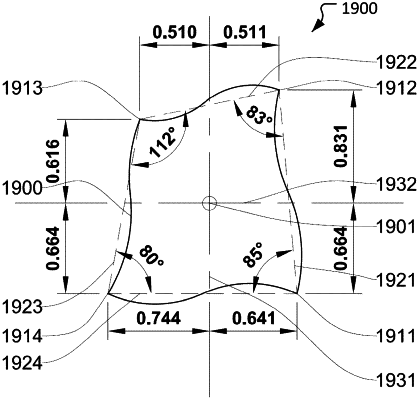| CPC A61C 5/40 (2017.02) [A61C 1/06 (2013.01); A61C 5/42 (2017.02)] | 28 Claims |

|
1. An endodontic instrument for preparing an endodontic cavity space, the endodontic instrument comprising:
a shank configured for attachment to a motor to drive the endodontic instrument about a first axis; and
a spirally shaped body having a corkscrew shaped profile extending from the shank by a length, the spirally shaped body being solid and having: (i) a shank end where the spirally shaped body and the shank meet and (ii) a tip end, at least a portion of the spirally shaped body being tapered such that the tip end has a diameter that is less than a diameter of the shank end,
the spirally shaped body comprising a plurality of transverse cross-sections, each transverse cross-section of the spirally shaped body having a center of mass and comprising:
four sides; and
four corners, wherein each corner of the four corners is at a junction of two adjacent sides of the four sides, wherein the four corners are positioned relative to each other such that lines drawn between each pair of adjacent corners of the four corners results in four lines that have no parallelism nor perpendicularity relative to each other and that define acute angles at three corners of the four corners,
wherein perpendicular distances between an axis passing through the center of mass and two corners of the four corners are equal,
the spirally shaped body having a center of mass path defined by the centers of mass of the plurality of transverse cross-sections of the spirally shaped body, wherein at least a portion of the center of mass path between the tip end and the shank end spirals around the first axis along a length of the first axis,
wherein the corkscrew shaped profile of the spirally shaped body configures the endodontic instrument to be radially compressible between: (i) a radially unconstrained configuration in which at least a portion of the center of mass path between the tip end portion and the shank end portion is offset from the first axis and spirals around the first axis along a length of the first axis, and (ii) a radially constrained configuration in which the portion of the center of mass path is more aligned with the first axis than in the radially unconstrained configuration.
|